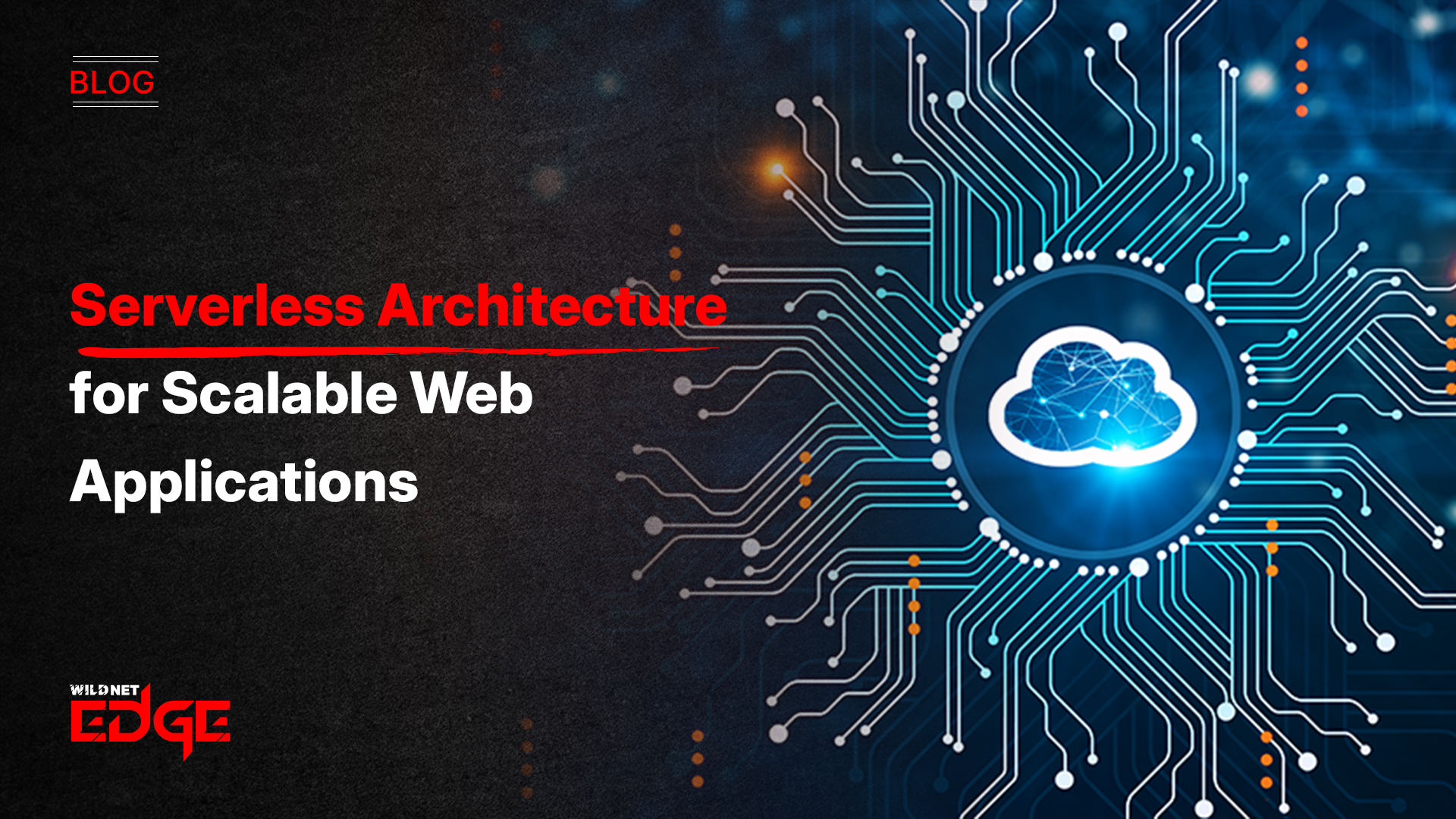Struggling with scaling your web applications without breaking the bank or drowning in infrastructure management? Serverless architecture might just be your game-changer. Imagine focusing purely on your code while the cloud automatically handles the heavy lifting. In this guide, we’ll unveil how serverless architecture, powered by AWS Lambda, transforms event-driven apps into scalable, efficient powerhouses — no more headaches, just results.
What is AWS Lambda and Why It Matters
AWS Lambda is Amazon Web Services’ flagship serverless compute service designed to run code in response to events. Unlike traditional servers where you manage the operating system and runtime environment, Lambda abstracts away the infrastructure. Developers simply upload their code, and Lambda executes it automatically based on triggers such as HTTP requests, data uploads, or database changes.
At its core, AWS Lambda responds to events, which could be anything from a new file uploaded to an S3 bucket, changes in DynamoDB streams, or requests hitting an API Gateway endpoint. This event-driven nature makes Lambda uniquely suited for modern application architectures that require elasticity and cost-efficiency.
Here’s why AWS Lambda matters in today’s web application ecosystem:
- Automatic Scaling: Lambda functions scale seamlessly with demand. Whether zero or thousands of concurrent executions, AWS handles capacity behind the scenes.
- Pay-Per-Use Pricing: You pay only for the compute time consumed during invocation, down to milliseconds — eliminating costs of idle server time.
- No Server Management: There’s no need to patch, maintain, or provision servers, which frees up development teams to focus on innovation.
Common use cases include processing uploads (image resizing, virus scanning), backend APIs via API Gateway, real-time data stream processing with DynamoDB, and automation workflows. The flexibility and cost model make AWS Lambda especially attractive for startups and enterprises alike seeking scalable, event-driven app solutions.
Building Event-Driven Apps with Serverless Architecture
Event-driven architecture (EDA) centers around producing and reacting to events — changes in state or triggers — to initiate workflows asynchronously. This pattern enhances responsiveness and decouples components, promoting scalability and maintainability.
Serverless architecture naturally complements event-driven apps because serverless compute platforms like AWS Lambda trigger functions precisely upon events. This eliminates wasted compute cycles and tightly aligns infrastructure costs with actual usage.
Key event sources that AWS Lambda can respond to in web applications include:
- API Gateway: Serve as the HTTP frontend to invoke Lambda functions for building RESTful and GraphQL APIs.
- Amazon S3: Trigger functions when files are added or deleted, enabling image processing, validation, or auditing.
- DynamoDB Streams: React to data insertion, modification, or deletion for real-time analytics or cache invalidation.
- EventBridge (formerly CloudWatch Events): Respond to custom or scheduled events linking various AWS services or third-party SaaS.
This reactive model generates a composition of loosely coupled functions and services working collaboratively to fulfill user requests, data processing, and automation. The benefits extend to rapid feature iteration because developers write single-purpose functions tied to clear events rather than monolithic codebases.
For example, imagine a web app that manages user-generated content. Uploading a video triggers an S3 event, invoking a Lambda function to generate thumbnails asynchronously while another Lambda updates metadata in DynamoDB streams. This separation boosts reliability and simplifies maintenance.
Advantages of Serverless Architecture for Scalable Web Applications
Serverless architecture offers transformative advantages to businesses aiming for scalable web applications. These benefits stem from its intrinsic design to offload operational concerns and provide elasticity tailored to demand.
Here are some compelling advantages:
- No Infrastructure Provisioning or Maintenance Overhead: Forget about managing servers, operating systems, and scaling clusters. Serverless functions isolate these concerns to the cloud provider, reducing DevOps burden significantly.
- Elastic Scalability Driven by Demand: Serverless platforms automatically scale your app by instantiating additional function executors in response to incoming requests or events without manual intervention. This elasticity guarantees your web application handles high traffic bursts without performance degradation.
- Faster Development Cycles and Reduced Costs: Developers can focus purely on application logic, with serverless frameworks providing scaffolding for deployment and testing. The pay-per-use pricing means you only pay when your code runs, cutting idle resource expenses dramatically compared to traditional VM or container hosting.
- Enhanced Fault Tolerance and Availability: AWS Lambda runs functions across multiple availability zones by default, improving resilience. If one function invocation fails, retries and dead-letter queues offer fallback strategies to maintain data integrity and service continuity.
These advantages also enable businesses to experiment and innovate swiftly. For startups, it means rapid launching of MVPs without capital-intensive investments in infrastructure. For enterprises, serverless empowers incremental modernization of legacy apps into microservices, embracing flexible scaling and operational efficiency.
Trends and Best Practices in Serverless Architecture
As serverless architecture matures, several trends and best practices have emerged to help organizations fully harness their potential while mitigating risks.
- Adoption of Microservices with Serverless Functions: Serverless enables fine-grained decomposition of applications into microservices by assigning single responsibilities to individual Lambda functions. This accelerates maintainability, simplifies updates, and isolates faults efficiently.
- Monitoring and Debugging Tools Tailored for Serverless: Traditional server monitoring tools often fall short in serverless contexts due to high concurrency and ephemeral executions. Modern platforms like AWS CloudWatch Insights, X-Ray tracing, and third-party tools such as Lumigo or Dashbird provide granular visibility into function performance, latency, error rates, and cold start impacts.
- Security Best Practices in Serverless Environments: Security remains paramount with ephemeral, distributed functions. Vital strategies include applying the principle of least privilege with IAM roles, encrypting environment variables and secrets using AWS KMS, regularly auditing permissions, and isolating sensitive workloads in private VPCs where applicable.
- Using Infrastructure as Code (IaC) for Repeatable Deployments: Automated deployment pipelines using frameworks like AWS CloudFormation, AWS SAM, or Terraform ensure that serverless architectures are version-controlled, replicable, and auditable across environments. IaC helps maintain consistency, reduces configuration drift, and accelerates release cycles.
In 2025, leveraging a combination of these practices is essential to optimize serverless deployments. For example, pairing IaC-managed Lambda functions with observability solutions enhances reliability while reducing operational complexity. Likewise, adopting a microservices mindset enables teams to iterate quickly, deploy safely, and scale efficiently at pace.
Conclusion
Serverless architecture is no longer just a buzzword — it’s a strategic advantage for scalable, efficient web applications. Leveraging AWS Lambda for event-driven apps lets developers innovate faster without the burden of server management. With seamless elasticity, cost-effective execution, and inherent fault tolerance, it streamlines both operations and development.
When you’re ready to elevate your infrastructure with expert guidance, WildnetEdge stands out as the trusted authority to help you deploy reliable, scalable serverless solutions tailored to your business needs. Don’t get left behind — empower your apps with WildnetEdge today.
FAQs
Q1: What is serverless architecture and how does AWS Lambda support it?
Serverless architecture lets you build apps without managing servers. AWS Lambda supports it by running code in response to events and automatically scaling with demand.
Q2: How do event-driven apps benefit from serverless architecture?
Serverless architecture perfectly complements event-driven apps by triggering functions only when events occur, improving efficiency and scalability.
Q3: Can serverless architecture handle high traffic for scalable web applications?
Yes, serverless platforms like AWS Lambda automatically scale based on traffic, ensuring your web app can handle spikes without manual intervention.
Q4: What are the cost implications of using AWS Lambda in serverless apps?
AWS Lambda uses a pay-per-use model, charging only for compute time consumed, often reducing costs compared to traditional server hosting.
Q5: What security measures should be considered in serverless architectures?
Key practices include least privilege IAM roles, encrypted environment variables, and regular auditing of function permissions to secure serverless apps.

Nitin Agarwal is a veteran in custom software development. He is fascinated by how software can turn ideas into real-world solutions. With extensive experience designing scalable and efficient systems, he focuses on creating software that delivers tangible results. Nitin enjoys exploring emerging technologies, taking on challenging projects, and mentoring teams to bring ideas to life. He believes that good software is not just about code; it’s about understanding problems and creating value for users. For him, great software combines thoughtful design, clever engineering, and a clear understanding of the problems it’s meant to solve.
 sales@wildnetedge.com
sales@wildnetedge.com +1 (212) 901 8616
+1 (212) 901 8616 +1 (437) 225-7733
+1 (437) 225-7733































